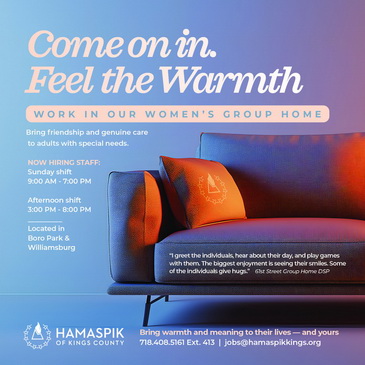NEW YORK, NY — Mention of the Lower East Side often evokes images of heaving tenement buildings, anxious immigrants, and pungent pickles. While the pickles remain a landmark on Hester Street, the rest of the neighborhood has changed. The immigrants who came did everything they could to leave; today, their great-grandchildren are coming back in droves. Introducing them to a Jewish experience that packs a meaningful alternative to the faded memories of kitsch yiddishkeit portrayed in popular films, are Chabad-Lubavitch representatives.
Jewish Revival Greets Young Jews Moving to the Lower East Side
NEW YORK, NY — Mention of the Lower East Side often evokes images of heaving tenement buildings, anxious immigrants, and pungent pickles. While the pickles remain a landmark on Hester Street, the rest of the neighborhood has changed. The immigrants who came did everything they could to leave; today, their great-grandchildren are coming back in droves. Introducing them to a Jewish experience that packs a meaningful alternative to the faded memories of kitsch yiddishkeit portrayed in popular films, are Chabad-Lubavitch representatives.
Historically the Lower East Side included the area from the Manhattan Bridge across town to Broadway and up to 14th Street. From the late 1800s on, the “the tired, poor, and huddled masses” fled poverty and pogrom for the promise of American shores. Their first stop was the Lower East Side where they were greeted by hawking peddlers with overflowing pushcarts and young women who earned paltry wages in garment factories. Though the dialects may have been strange, the welcome sound of Yiddish helped many feel at home.
Still standing on the corner of Green Street and Washington Place is the Brown Building, originally the Asch Building. It was a Shabbos afternoon, March 25, 1911, when 146 Triangle Shirtwaist employees died in one of the worst industrial disasters in New York. Those that didn’t jump to their death, perished in the flames. Most of them were young Jewish girls working without the benefit of laws protecting religious practices in the workplace Americans enjoy
Today, enjoying a vastly changed milieu within the original borders of the Lower East Side, young Jewish students mere yards from this national disaster, celebrate Shabbos with the light and warmth that Rabbi Dov Yonah and Sarah Korn, Chabad Shluchim at NYU’s campus, bring to the experience.
















batya ibroci
BS”D
go korns!!!! you guys are amazing!
Mushky
Those people are amazing
FabrangItOn
BH”
rabbi and sarah korn own downtown! way to go keep it up!
thursday shuir
Rabbi Korn I never got to thank you 4 your shuir every thursday! You do an amazing job and i realy enjoy it! It’s my favorite shuir!
Adelmans
amazing stuff Dov Yonah and Sarah!